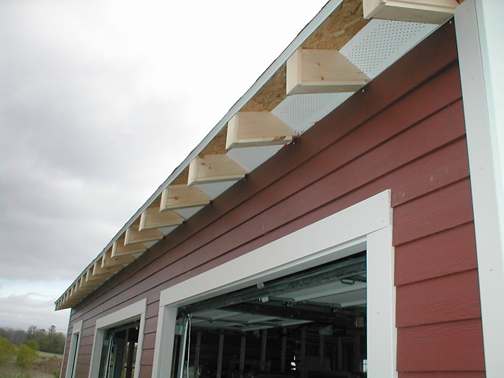

Measuring from the tip of the rafter, I mark off the diagonal measurement along the top edge of the rafter. This way, I have something to hook my tape measure on, which is very handy for long rafters. I make this plumb cut at the peak with my saw before marking my seat cut (or “bird’s mouth,” in some vernacular). Keep in mind that, for most framing jobs, the tongue (the skinny side) is the vertical cut, and the body (the wider side) is the horizontal or seat cut.

Laying the square on the top of the rafter material, I start by scribing the plumb cut at the peak of the rafter. I carefully align those measurements along the edge of the rafter material, and then set the gauges. In this case, I attach the gauges for a 6/12 pitch-6 in. First, I attach a set of stair gauges to my framing square, so I can make precise, repetitive marks. The next step is to layout and cut the rafter. If all the results match, you can rule out any keystroke errors. 5 13/16 in.īe sure to go through all the calculations a few times, clearing the calculator in between.

Next, I press the Rise key, and write that number down: 1 ft. I write this measurement down on the template rafter, too. All I have to do is press the Diag key, and the calculator displays the measurement: 3 ft. For instance, I’d also like to know the diagonal measurement, which will help me layout the seat cut. Now the calculator has all the details it needs, and it can provide me with every bit of information about that triangle. Note: It’s important to remember to press the Inch key when entering the roof pitch-without it, the calculator treats the number entered as ‘degrees of pitch’ instead of the rise/run ratio of the roof. So I enter the number 6 into the calculator, followed by the Inch key, and then press the Pitch key. I need one more element, and in this case I know the pitch of the roof, which is 6/12. Next, I press the Run key, instructing the calculator to use that dimension as the ‘run,’ which is the first element of the right triangle I am working with. The result on my Construction Master calculator is 2 ft. Then, I divide that by 2 to get the actual run of each rafter. I write this down on my template rafter as the adjusted overall run.
#Rafter tail designs full
For simplicity, and to prevent error, the first thing I do is deduct the full width of the ridge beam from the building width: in this example 6 ft. 3/4 in., including the sheathing.Įach rafter only spans half the width of the building, and they start at the face of the ridge beam. The building width, in this example, is 6 ft. Looking at our model roof, I need to find the two elements that will give me all the information needed to frame the roof. Most of the time, the two values I have are the run of a building and a specified pitch, which is why I used these values for the example in this online tutorial: If you have any two of those values, the calculator will quickly figure out the rest of the right triangle-which means it will tell you everything else you need to know about a rafter. The values on the calculator that we use for common roof framing are: Pitch, Rise, Run, and Diagonal. They essentially do the same thing as an actual construction calculator, but I prefer the real thing-if I’m going to drop a calculator in the mud, I’d rather it not be my pricey smartphone! Using a Construction Calculator
#Rafter tail designs software
There are also two laudable software versions available as smartphone apps: one from Calculated Industries, and one from BuildCalc. They put all the information in a nice, clean, easy-to-understand interface. These calculators eliminate some of the memorization, and all of the charts.
#Rafter tail designs pro
Side-by-side: The Construction Master Pro (left) and the BuildCalc app on an iPhone (right) (Note: Click any image to enlarge)Ĭonstruction calculators are pre-programmed with Pythagorean formulas for finding the values of right triangles-and roofs are all about right triangles.


 0 kommentar(er)
0 kommentar(er)
